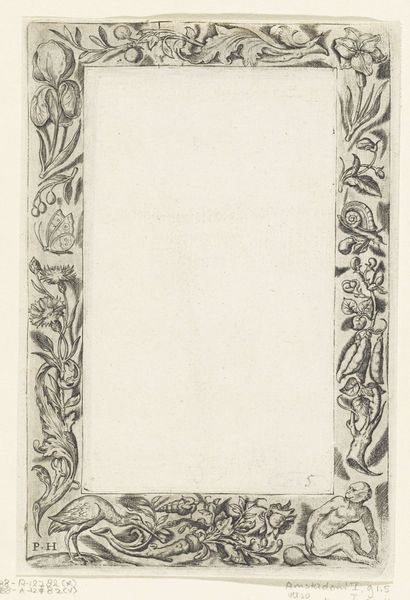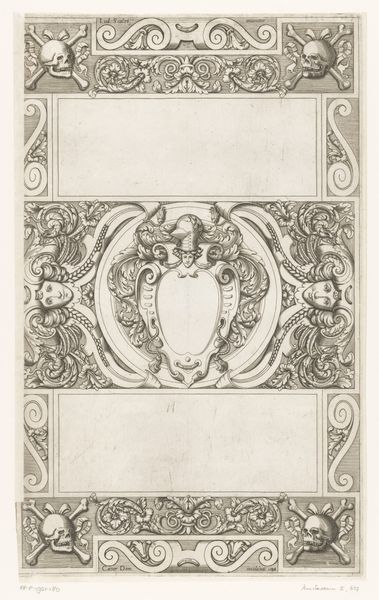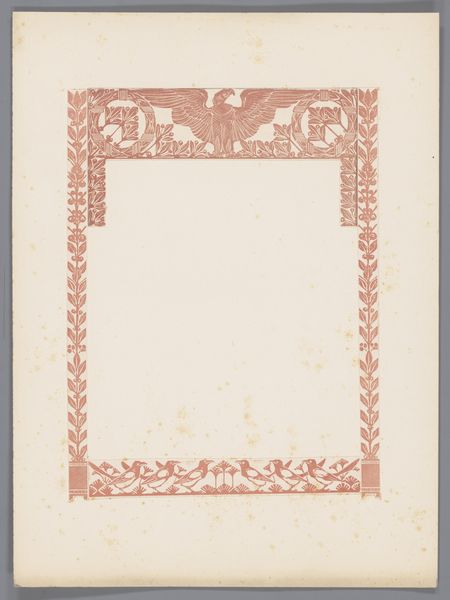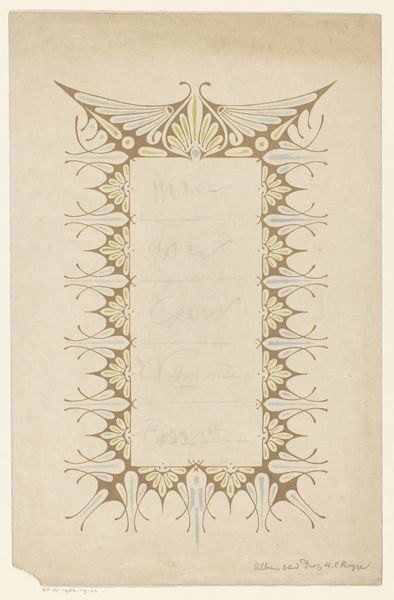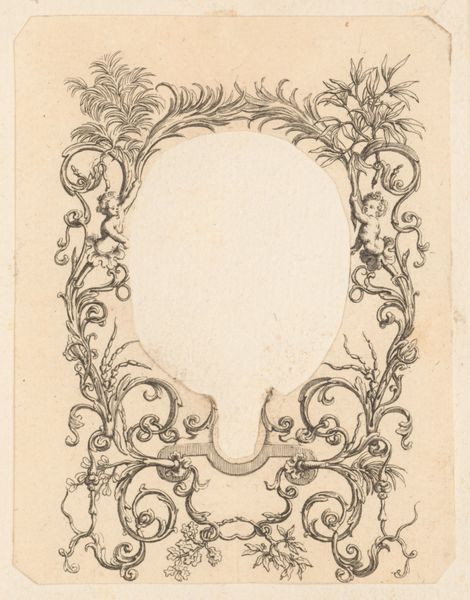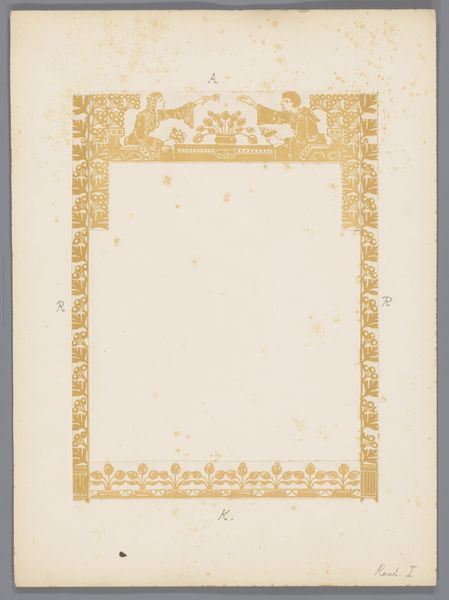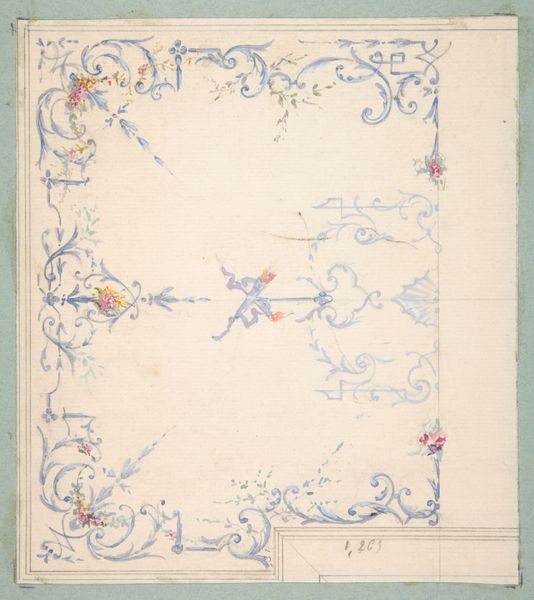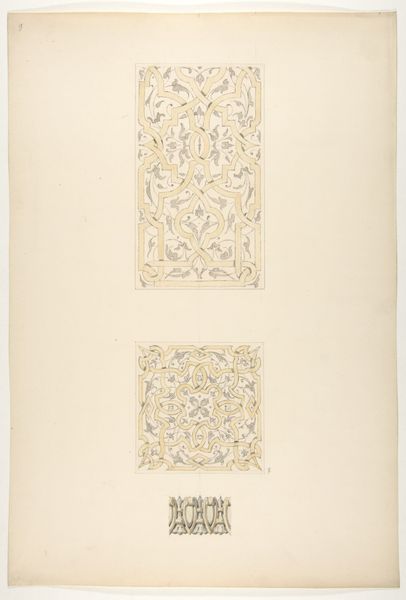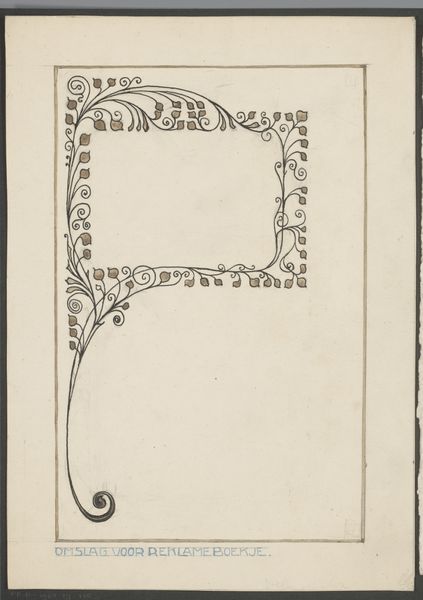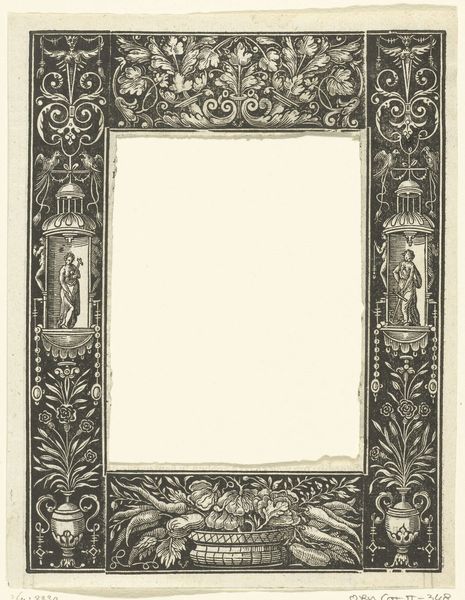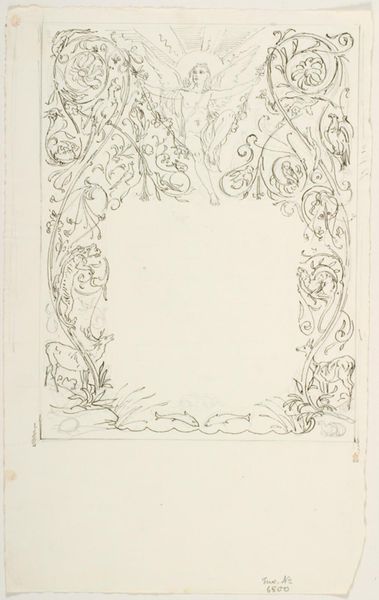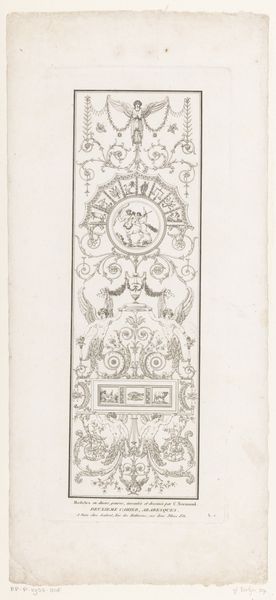
Omlijsting met rechtsonder een vos die een vogel in zijn bek houdt before 1550
0:00
0:00
pieterhuys
Rijksmuseum
drawing, print, engraving
#
drawing
# print
#
landscape
#
figuration
#
form
#
line
#
northern-renaissance
#
engraving
Dimensions: height 173 mm, width 115 mm
Copyright: Rijks Museum: Open Domain
Curator: This is a work entitled "Omlijsting met rechtsonder een vos die een vogel in zijn bek houdt," which translates to "Border with a fox holding a bird in its mouth in the lower right." It's an engraving, possibly a drawing as well, crafted before 1550 by Pieter Huys. It’s currently held at the Rijksmuseum. Editor: What strikes me immediately is its delicacy, even a kind of somberness. It is, after all, a predator in action, even though set within a decorative border. Curator: That's a keen observation. Considering its creation within the context of the Northern Renaissance, the piece exemplifies a society deeply intertwined with both the beauty and harsh realities of nature. We often think about illuminated manuscripts and intricate details from the era as devotional objects, but there is also the reality of daily life for both human and non-human animals alike. Editor: Precisely, and that makes me think about the border as a framing device - literally a borderland space- perhaps suggesting a transition between domains: the "civilized" artistic space of the image, and the rawness of nature with predation so central to the environment’s operations. How were pieces like this generally received? Curator: It’s hard to say for sure, but framing devices like these could have been used to enhance other, central images in religious texts. It would also be used for secular settings; thus, the piece can be understood from an intersectional context where we're investigating a variety of audiences. Its visual power undoubtedly contributed to solidifying social ideas and practices. The fox with its prey suggests cunning, survival, even power over the less fortunate. Editor: Right, I notice also that there’s an owl, traditionally symbolizing wisdom. So its juxtaposition to this scene of animal predation might create tension that urges one to question societal morality at large. Curator: It absolutely could. And it encourages us to unpack power dynamics prevalent even now: in food politics, climate ecologies, and human systems of government, just to name a few. What at first may seem like an isolated antique can offer critical lenses. Editor: I'll certainly walk away thinking about it in that light. A reminder of the natural world as a key framework of culture, but nature's inherent complexities shouldn’t be understated.
Comments
No comments
Be the first to comment and join the conversation on the ultimate creative platform.
